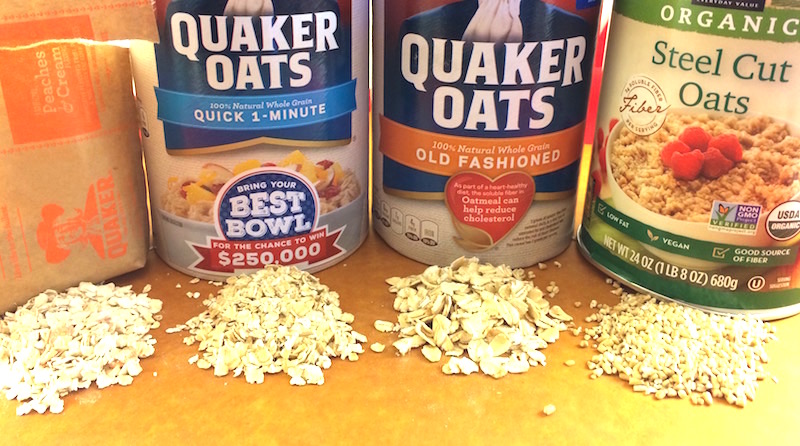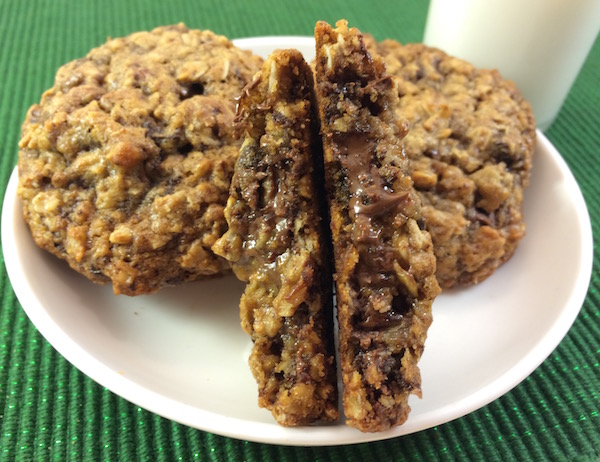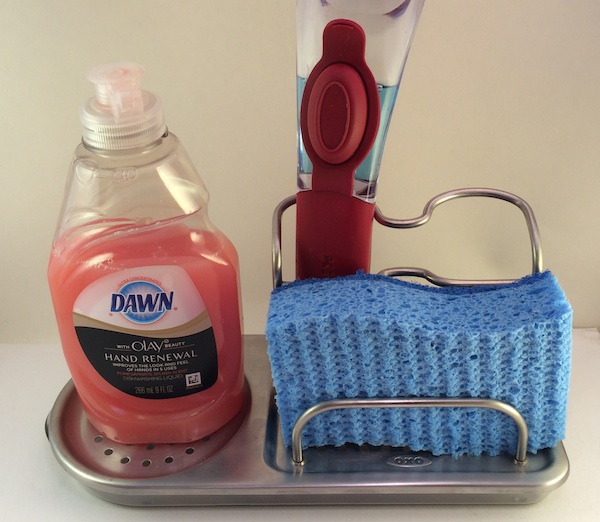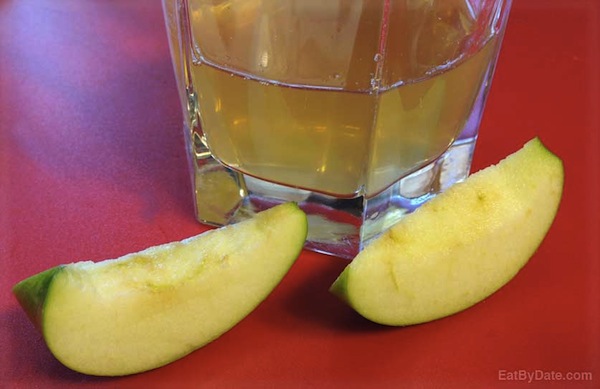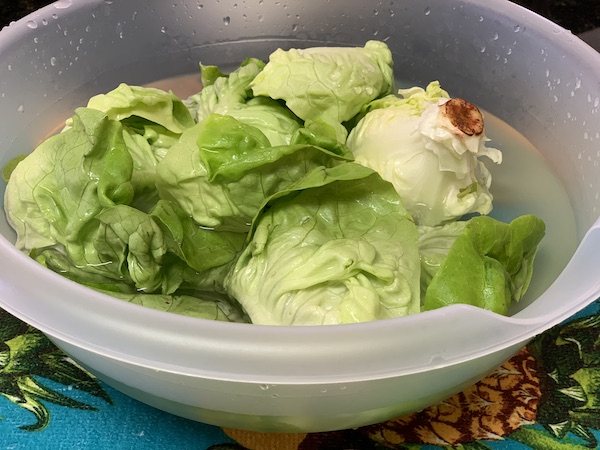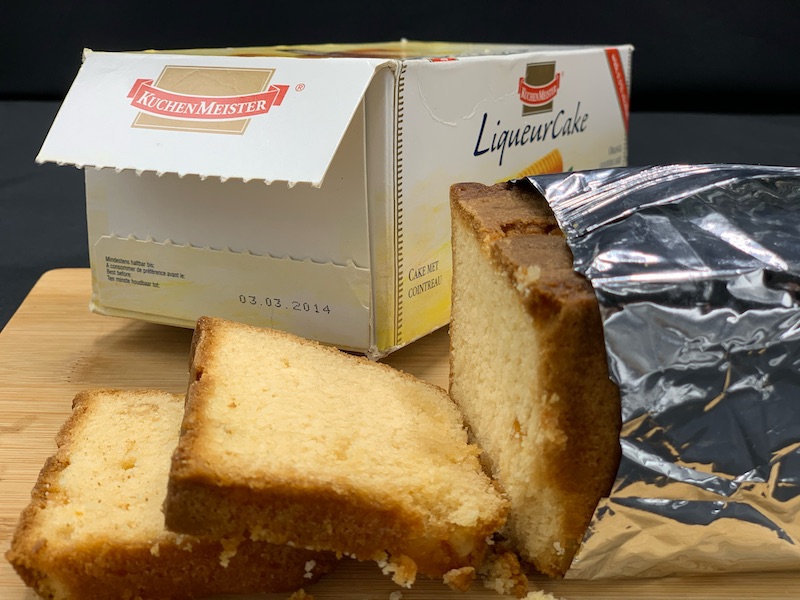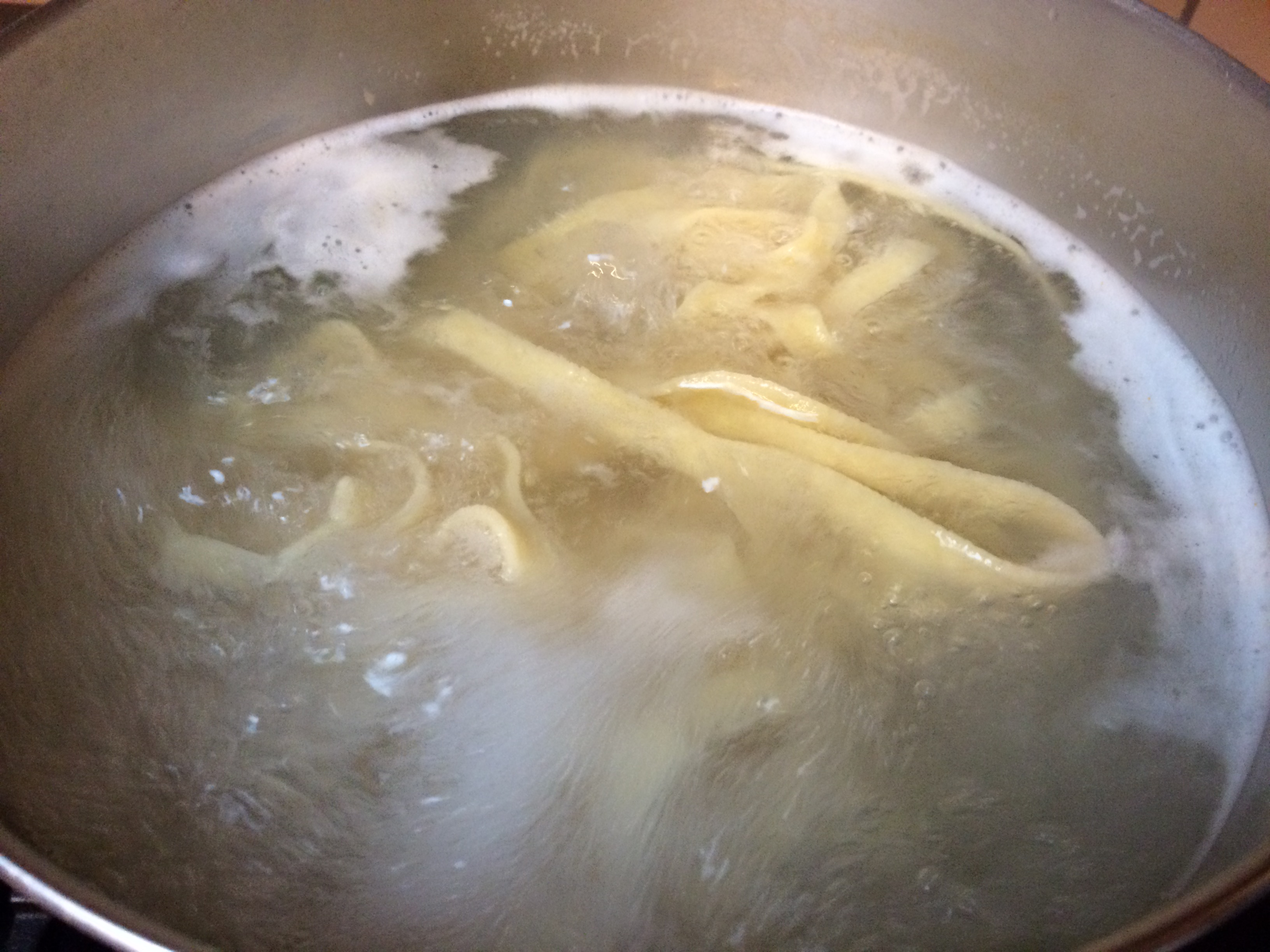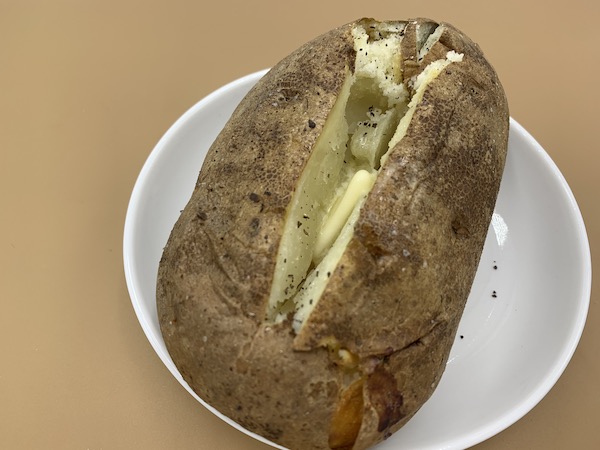Buffet Basics
Make the Table Flow
Planning is key to carefree entertaining, and planning a buffet table (where food is set out for people to grab a plate and serve themselves) can make entertaining even easier. Although a sit down family style dinner is often preferred, the ease of a buffet style dinner cannot be denied and is therefore hard to resist setting up during busy holiday times. A buffet table is also a more efficient way of feeding both a crowd or a staggered arrival time type of party, such as an open house.
The concept is simple, but there are a few buffet basics to beware of in order to make things run smoothly when planning this type of meal.
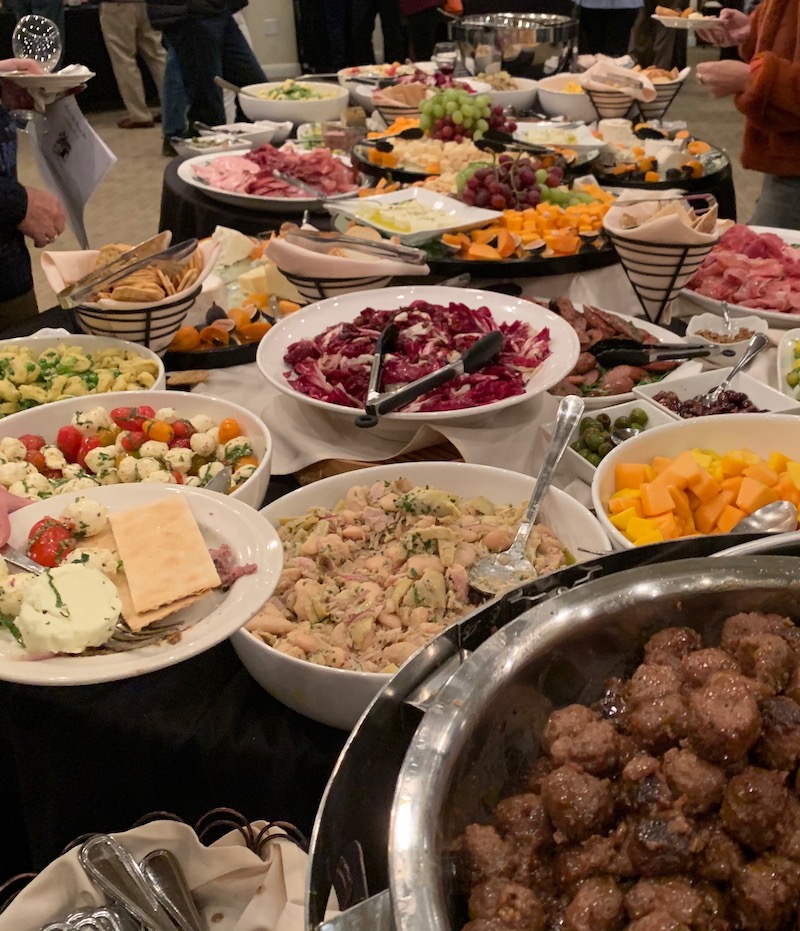
Buffet Basics
How to Set Up a Buffet
Estimate.
Make the largest
quantity of the items that will can later be enjoyed
and utilized as leftovers or to make other dishes if
they are not popular the night of the party. For
example, leftover chicken can be thrown into pot
pies the following night. Remember that everyone
will not take a serving of everything. Vegetarians
will skip the meat dishes, dieters will skip the
desserts, and so on.
Portion.
Pre-cut most
everything possible on the buffet table.
– Cut items like steak very thin. People tend
to take the same number of pieces, no matter how
thick or thin they may be presented. Cutting small
or thin slices will save people from piling too much
onto their plate and ultimately wasting food.
– Make pies in square pans so they can be cut
into smaller squares. Squares are easy to pop in
your mouth without any waste.
– Pre-plating desserts on tiny plates will
also help with food waste as people will just take
one plate instead of a slice from several choices
onto their plate.
Delegate.
If someone offers
to bring something, let them! Just be sure to
communicate with everyone so that efforts are not
duplicated and nothing gets forgotten. Potlucks are
a great way to share the effort and cost, that is
unless everyone decides to make the same dish! (It
has happened – pizza and lasagna are a great
traveling dishes, it’s no secret.) Since the
main dish is usually the most costly, the most labor
intensive and the hardest to transport; another
common mistake when there is no communication is
that everyone brings a dessert or an appetizer and
then people will not get a meal. If the host makes
the main dish(es) and then leaves it up to the guest
to bring coordinating side dishes, that can turn out
well too. Also make sure that the all important main
dishes and any “must have” sides are
done by either you or a trusted individual.
Utilize.
This is the time to
make use of any gadgets that may be in your arsenal.
Warming trays and slow cookers can become best
friends as they keep the foods warm so that the host
can actually relax and enjoy the party too. Just
make sure to use only the low setting and to
position a spoon right next to the slow cooker in a
spoon holder or on a napkin. Also make sure that
there is a spot to place the lid of the cooker
during serving.
Offer.
Be sure to offer an
array of cold foods along with the hot. Keep cold
foods on larger trays of ice if they are items that
should be chilled, and especially if they contain
ingredients such as
mayonnaise. If the ice supply is low, be sure to stick these
items back into the refrigerator before the two hour
time frame of safety has passed.
Mingle.
To help with mingling
at the party, offer different food stations around
the house. Use both the kitchen and dining tables to
set foods out and also offer a bar in a separate
area if it is physically possible. This will keep
everyone from standing by the food and making it
awkward for others to reach the food. Don’t
forget a coffee station near the bar area.
Separate.
Be sure to have a
separate little spot in case people bring hostess
gifts. Late arrivals might not know where to stick
theirs and clutter around buffet tables will only
cause chaos.
Place.
Place cold items first
on the table so the hot items remain hot by the time
people get to them. This also fills plates with the
generally less expensive items like salads and buns,
leaving less space on the plate for the proteins at
the end.
Label.
– Make signs for foods to place next to them.
This will save a lot of questions and people piling
the wrong foods onto their plates. Place the signs
in matching or coordinating tiny frames or use tiny
chalkboards, which are handy when last minute
changes are needed (these were found at Target).
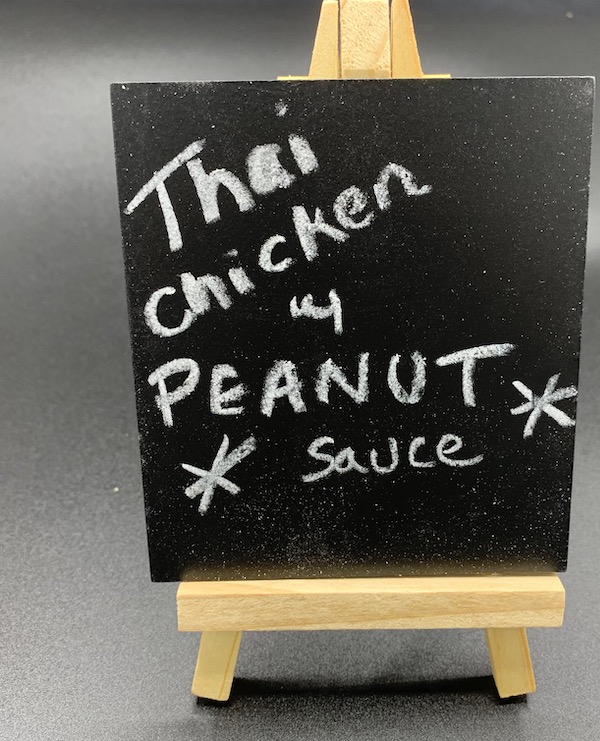
– Try butcher paper underneath the foods (this will also save the tablecloth from stains) for less formal buffet tables. Write the name of the dish right next to the dish (after all dishes are properly arranged, as they’ll be no swapping spots afterwards). Use a metallic marker for a fancier touch.
– Ask about allergies beforehand or clearly mark any potential problems. We once went to a party where 3 people ended up in the hospital for eating Thai chicken skewers (first timers didn’t realize that it’s the peanut sauce that makes them yummy).
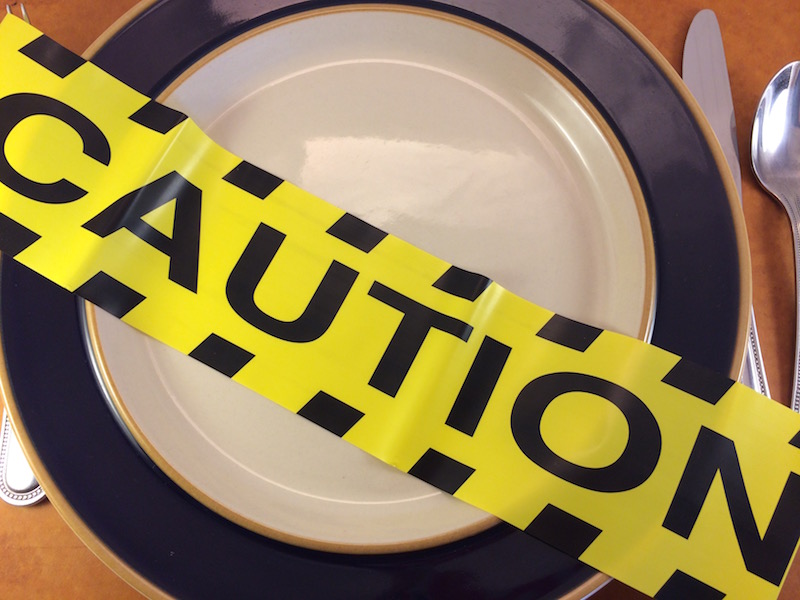
Buffet Basics
Buffet Checklist
This is listed first because it’s the one most often forgotten until it’s too late.
This is an essential item, people are also drinking and unfortunately leaving their glasses around to melt. Start making extra, weeks ahead if possible, and store them in large freezer bags.
The flat, thin reusable ice packs are great for sticking in the boom of a bowl or underneath a platter. Delicate items will really appreciate this extra chill.
If only to keep an appetizer warm, this pot is a great addition to any buffet table.
Even if you’re not serving wine, there’s a high chance that someone will bring a bottle.
Set the mood simply with a great centerpiece.
Or better yet, battery operated candles for a stress free setting.
Be sure to have more than enough so that those hitting the buffet again can start with a clean plate. Depending on the size of the party, consider paper or better yet reusable plastic. Washing dishes during your party is not fun.
If champagne flutes are in order, be sure they are clean and shiny ahead of time. If used only on special occasions, they’ve probably gathered some dust.
Make sure there are extras, these get dropped and disappear quickly.
A buffet line won’t move without one of these in each dish.
This is the one place where it may make sense to go paper and again, be sure to have more than enough. Messy guests will tend to grab them to pick up spilled food or drink, besides the one that goes with their plate.

Keep extra of these in an ice chest and keep it outside if possible and/or appropriate.
Many people like a cup of coffee after a nice meal and over indulging guests might actually need to stick around for a cup of joe before hitting the road. Fancy coffee sticks or spoons also add a nice touch here. These may seem indulgent, but can easily be made at home by dipping small spoons into melted chocolate and then quickly sprinkling them with the desired decor. For help on working with chocolate see our melting chocolate post.
Always remember the magic number – 2 hours – for certain foods to be safely left outside of the refrigerator. If the buffet will run for several hours then try to keep spare foods in the refrigerator and replace the entire plate once the one on the table is finished. If a food isn’t moving well and can be used for leftovers then go ahead and cover it and place it back into the refrigerator within the 2 hour timeframe.
Buffet Basics
Additional Info
For quick solutions to every day kitchen problems, see our food hacks post.
Similar to food hacks, check our grocery hacks for ways to get the most from your dollar at the grocery store.
We’ve also got some tool hacks, check our new uses for old tools for alternate ways to use various other gadgets you may have in the back of your cupboards or drawers.
Need a hostess gift? See our 2019 gift ideas or one of our older posts for some small gift ideas to take along to a party.
For an unusual and refreshing drink, check out pop beer.


